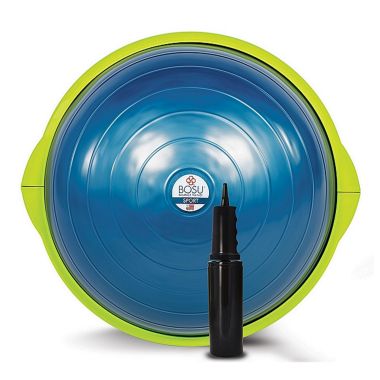Core Stability - Part 1

Core stability training is carried out with the aim to effectively recruit the trunk musculature followed by learning how to control the position of the lumbar spine during dynamic movements.
The Muscles
The deep trunk muscles are essential to the active support of the lumbar spine. The co-contraction of these muscles produce forces through the "thoracolumbar fascia" and the "intra-abdominal pressure" mechanism. This stabilises the lumbar spine, as a result the Para spinal and MF muscles act directly to resist the forces which act on the lumbar spine.
The deep trunk muscles consist of:
- Transversus Abdominis (TA)
- Multifidus (MF)
- Internal Oblique (IO)
- Para spinal
- Pelvic floor
It is important how these deep-trunk muscles are recruited, not just their recruitment. In 1997, Hodges and Richardson’s research showed that the co-contraction of the TA and MF muscles occurred before any movement of the limbs. This suggests that these muscles anticipate dynamic forces which may act on the lumbar spine, therefore allowing stabilisation of the area prior to any movement. Hodges and Richardson further showed the timing of co-ordination of these muscles was very significant.
Training
Once the key muscles and how they act have been identified, the next step is to establish how these muscles can be trained most effectively. Similarly with any type of strength and conditioning training, the training procedure for improving the function of the deep-trunk muscles must be specific to the task that is required. To achieve this, the type of contraction, muscle fibre type and the anatomical position required must be taken into account.
By definition, the deep-trunk muscles act as "stabilisers" and so are not involved in producing movements, instead these muscles involve static, or isometric, contractions. Moreover, they must act as stabilisers continuously throughout activities that take place every day as well as sport activities and fitness, and due to this require effective endurance of low-level forces. Although these muscles do not need to be particularly strong, they must be correctly coordinated and capable of working continuously.
In addition to this, stabiliser muscles should act by holding the lumbar spine in the neutral position; this is the correct alignment of the pelvis which allows the natural 'S' curve of the spine to take place. These characteristics create the base for the following deep-trunk muscle training program.
The Basics of Core Stability Training
Core-stability training begins with learning to co-contract the MF and TA muscles effectively because this has been identified as a key role to the lumbar-support mechanism. In order to perform the TA and MF co-contraction, you must perform the "abdominal hollowing" technique with the spine once again in the neutral position.
To Complete This Use The Following Guidelines:
- Start by lying on your back with your knees bent
- Your lumbar spine should not be arched up nor flattened against the floor, but instead aligned normally with a small gap between your back and the floor. This is the "neutral" lumbar position that should be learnt to achieve.
- Breathe in deeply, relaxing all your stomach muscles.
- Breathe out, as you do this, draw your lower abdomen inwards as if your belly button is going back towards the floor.
- Hold this contraction for 10 seconds and stay relaxed, allowing yourself to breathe in and out as you hold the tension in the lower stomach area.
- Repeat 5-10 times.
It is vital that this abdominal hollowing exercise is performed correctly otherwise the TA and MF muscles will not be recruited effectively.
Keep in mind the following points:
- Visualise the deep abdominal muscles as a corset that wraps round the abdomen
- Place one hand above the belly button and one below
- Slowly draw in the lower abdomen below the umbilicus, belly button, without drawing in the upper abdomen
- Breathe normally and hold the contraction
- Aim for a 10 second contraction and repeat 10 times
- Do not let your upper abdominals bulge outwards or allow the whole stomach tense up, as this means you have cheated by using the large rectus abdominis muscle (the six-pack) instead of the TA muscle
- Do not brace the TA too hard as a gentle contraction is enough. Remember you are trying to improve endurance not max strength
- Do not flatten your back or tilt your pelvis, because this means you have lost the neutral position that you are trying to learn to stabilise
- Do not hold your breath because this will not enable you to relax. You must learn to breathe normally, maintaining the co-contraction of TA and MF
- Place your fingers on either side of your lower abdomen (below the umbilicus) to feel the tension in the TA muscle
Once you have mastered the abdominal hollowing lying on your back, practice it lying on your front followed by four-point kneeling, sitting and standing. In each position, it is important to get your lumbar spine into neutral before you perform the hollowing movement.






